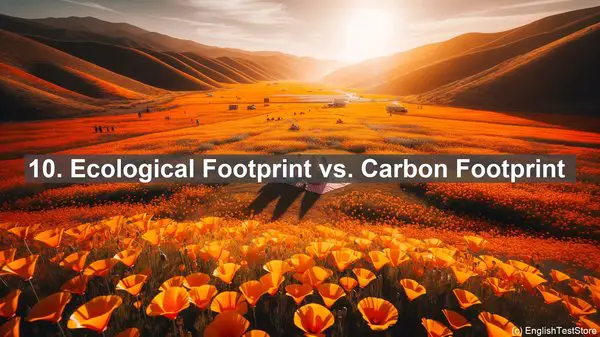Introduction
Today, we’re going to delve into the fascinating world of Geoecology. But before we dive in, it’s crucial to clarify some commonly confused words that often arise in this field. Understanding these distinctions will not only improve your comprehension but also enhance your ability to communicate effectively in the realm of Geoecology.
1. Weather vs. Climate
The terms ‘weather’ and ‘climate’ are often used interchangeably, but they have distinct meanings. Weather refers to short-term atmospheric conditions, such as temperature, humidity, and precipitation, that can change rapidly. On the other hand, climate represents long-term patterns of weather in a particular region. It’s like comparing a single day’s snapshot to a photo album spanning several years.
2. Erosion vs. Weathering
Erosion and weathering both involve the breakdown of rocks and landforms, but they differ in the agents involved. Weathering is the process of rocks breaking down due to exposure to elements like wind, water, and temperature changes. Erosion, on the other hand, involves the transportation and movement of these weathered materials by natural forces like rivers, glaciers, or wind.

3. Renewable vs. Non-Renewable Resources
Renewable resources, as the name suggests, are those that can be replenished over time, either through natural processes or human intervention. Examples include solar energy, wind power, and forests. Non-renewable resources, on the other hand, are finite and cannot be replenished once depleted. Fossil fuels like coal, oil, and natural gas fall under this category.
4. Biotic vs. Abiotic Factors
When studying ecosystems, it’s essential to consider both biotic and abiotic factors. Biotic factors refer to the living components of an ecosystem, such as plants, animals, and microorganisms. Abiotic factors, on the other hand, are the non-living elements, including temperature, sunlight, soil composition, and water availability. Both these factors play crucial roles in shaping an ecosystem.
5. Biome vs. Ecosystem
While often used interchangeably, biomes and ecosystems have distinct meanings. A biome is a large geographical area characterized by specific climatic conditions and the dominant vegetation and animal life. Examples include deserts, rainforests, and tundras. An ecosystem, on the other hand, refers to a smaller, self-contained unit within a biome, where organisms interact with each other and their environment.
6. Conservation vs. Preservation
Though both terms relate to the protection of the environment, conservation and preservation have different approaches. Conservation focuses on sustainable use and management of natural resources to meet present and future needs. It involves activities like regulated harvesting, reforestation, and wildlife management. Preservation, on the other hand, aims to maintain areas in their pristine state, often through strict protection and minimal human intervention.
7. Greenhouse Effect vs. Global Warming
The greenhouse effect and global warming are interconnected but distinct concepts. The greenhouse effect is a natural process where certain gases in the Earth’s atmosphere trap heat, keeping the planet warm enough to sustain life. Global warming, on the other hand, refers to the long-term increase in Earth’s average temperature, primarily due to human activities, which intensifies the greenhouse effect.
8. Biodiversity vs. Species Richness
Biodiversity encompasses the variety of life forms on Earth, including genetic, species, and ecosystem diversity. It not only refers to the number of different species but also considers their distribution and interactions. Species richness, on the other hand, specifically focuses on the number of different species present in a particular area. Biodiversity is like a complex tapestry, while species richness is a single thread within it.
9. Mitigation vs. Adaptation
When it comes to dealing with the impacts of climate change, mitigation and adaptation are two key strategies. Mitigation involves actions to reduce or prevent the emission of greenhouse gases, thus addressing the root cause of climate change. Adaptation, on the other hand, focuses on adjusting to the current and expected future impacts, such as building flood defenses or developing drought-resistant crops.

10. Ecological Footprint vs. Carbon Footprint
Both ecological footprint and carbon footprint are measures of human impact on the environment, but they differ in scope. Ecological footprint is a broader measure that considers the overall resources consumed and waste generated by an individual, community, or nation. Carbon footprint, as the name suggests, specifically focuses on the amount of carbon dioxide and other greenhouse gases emitted as a result of activities.
